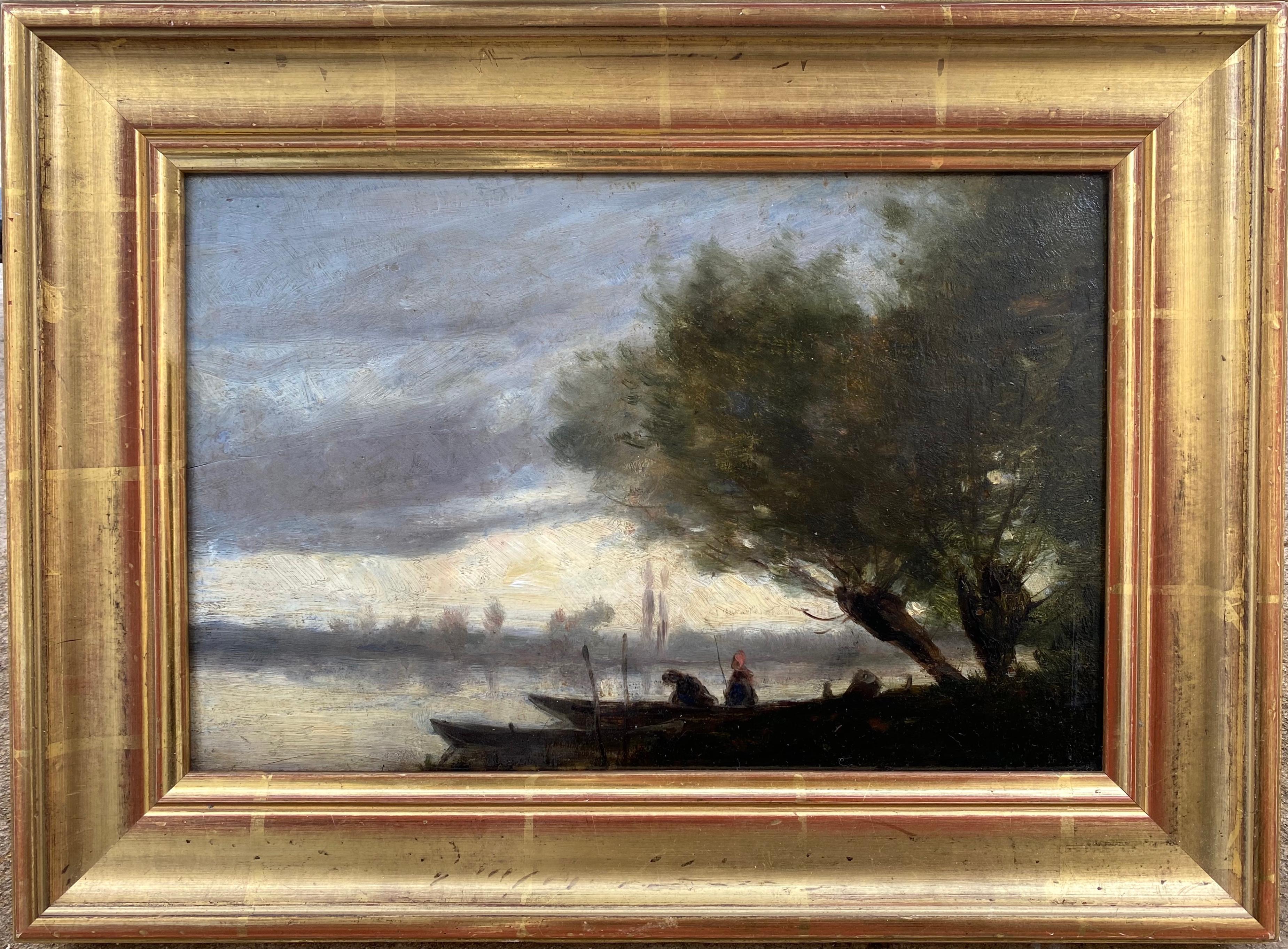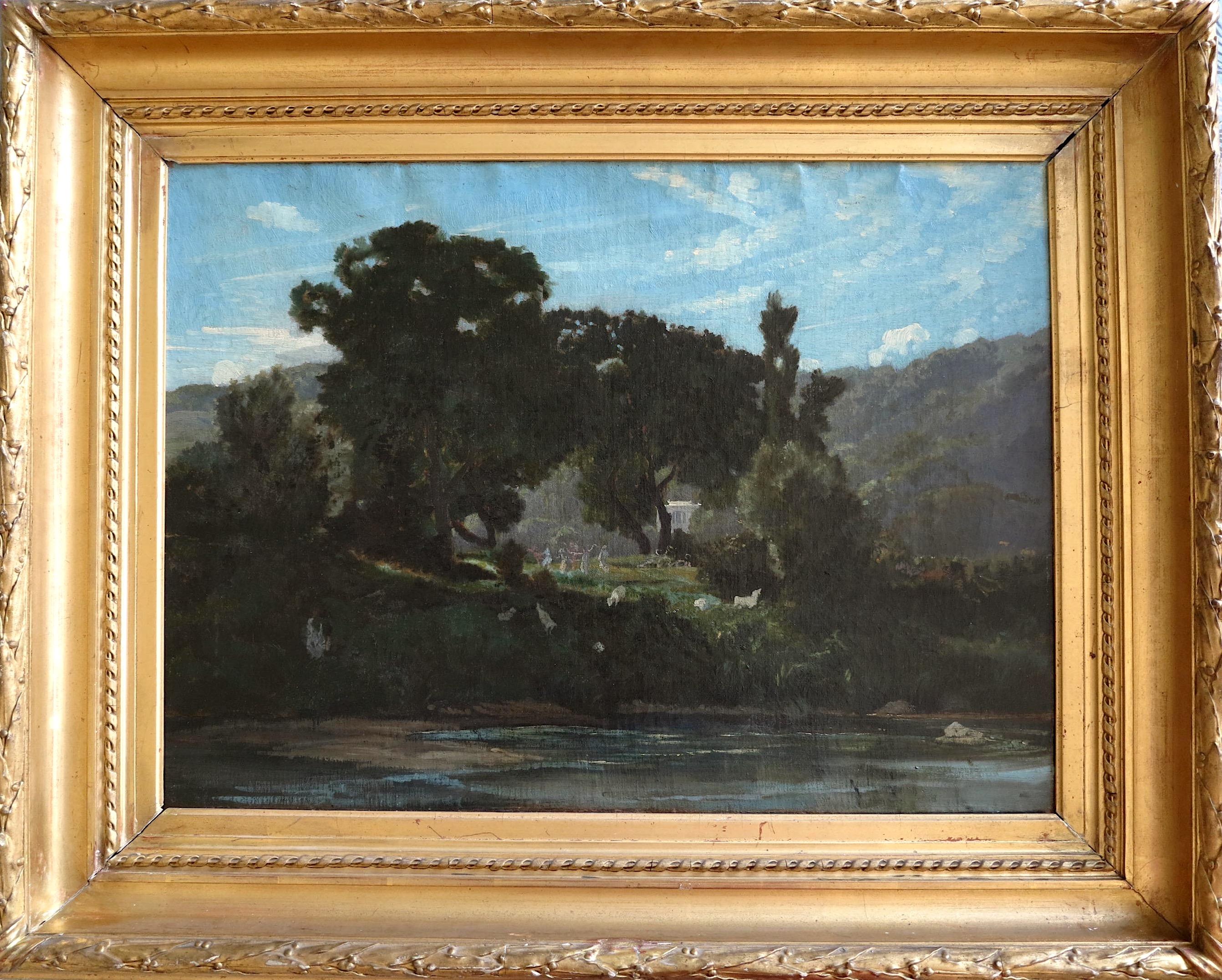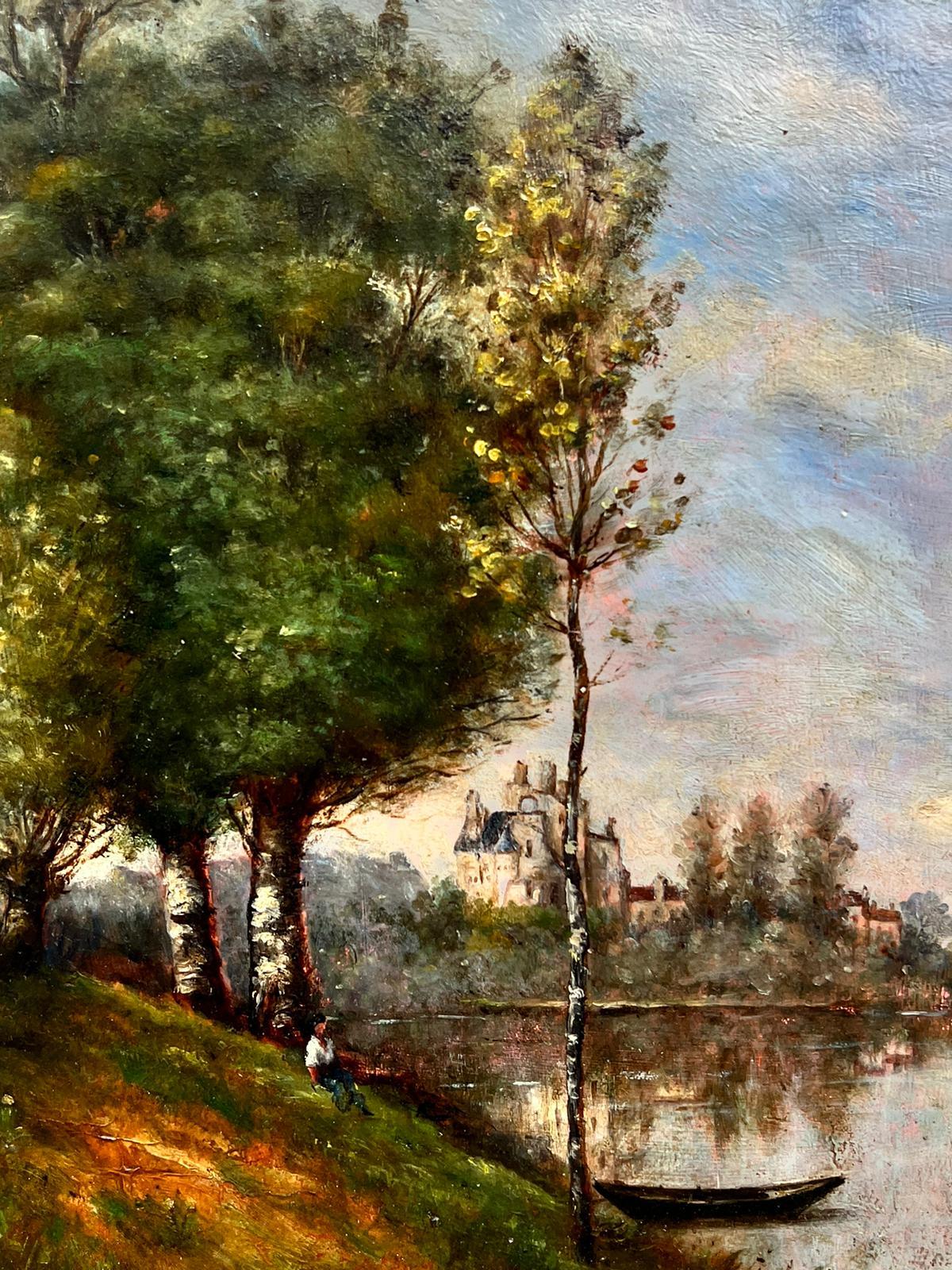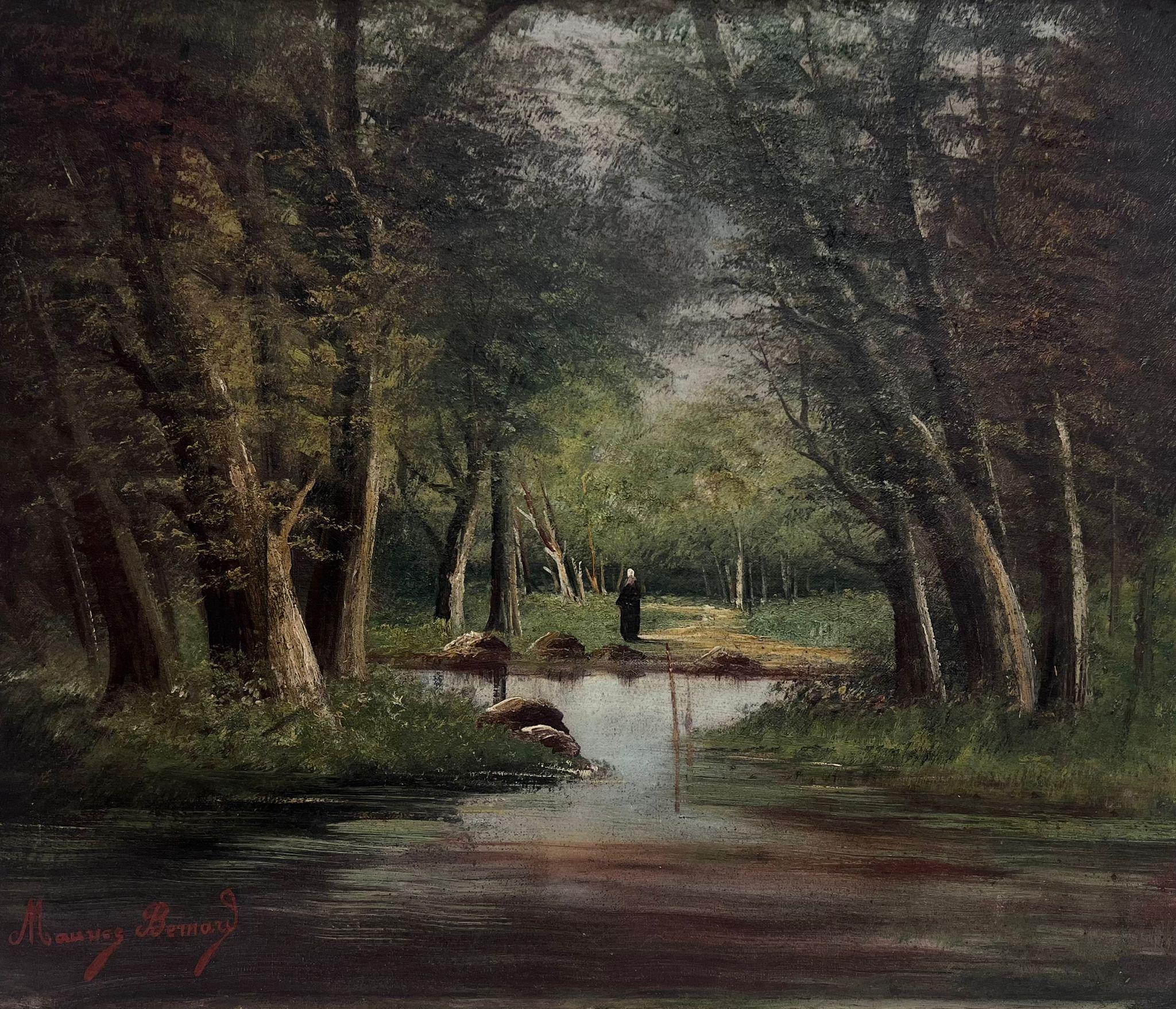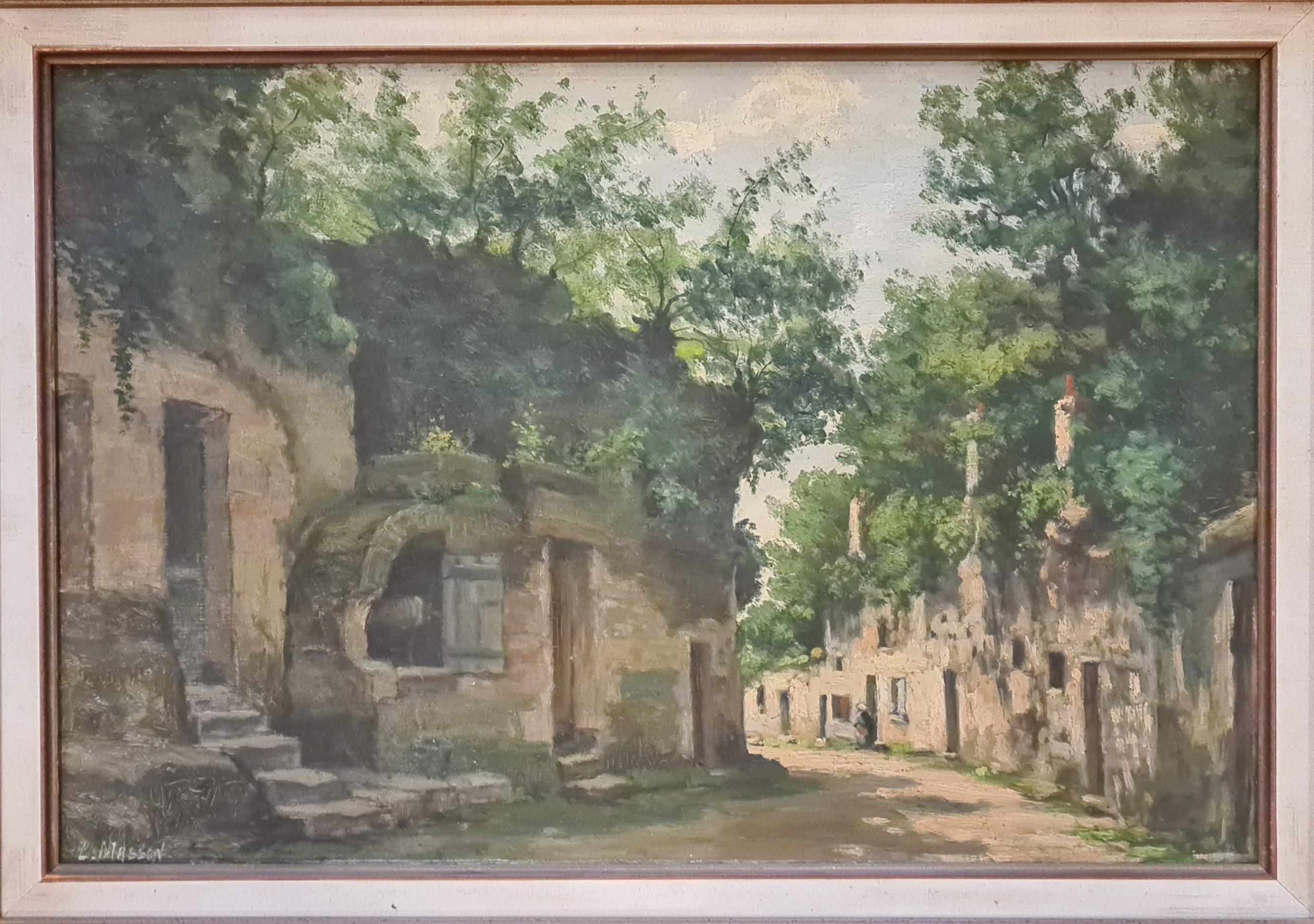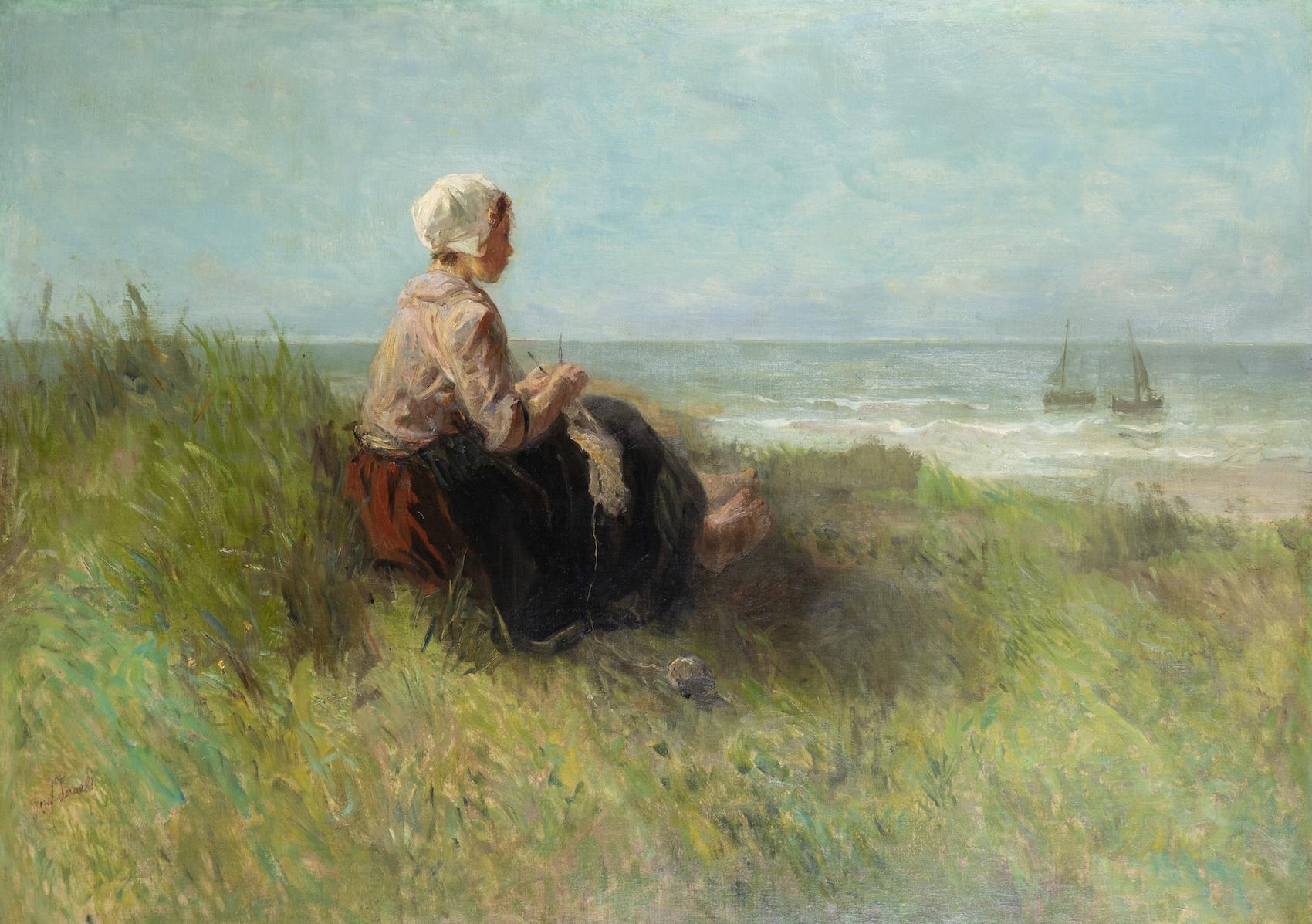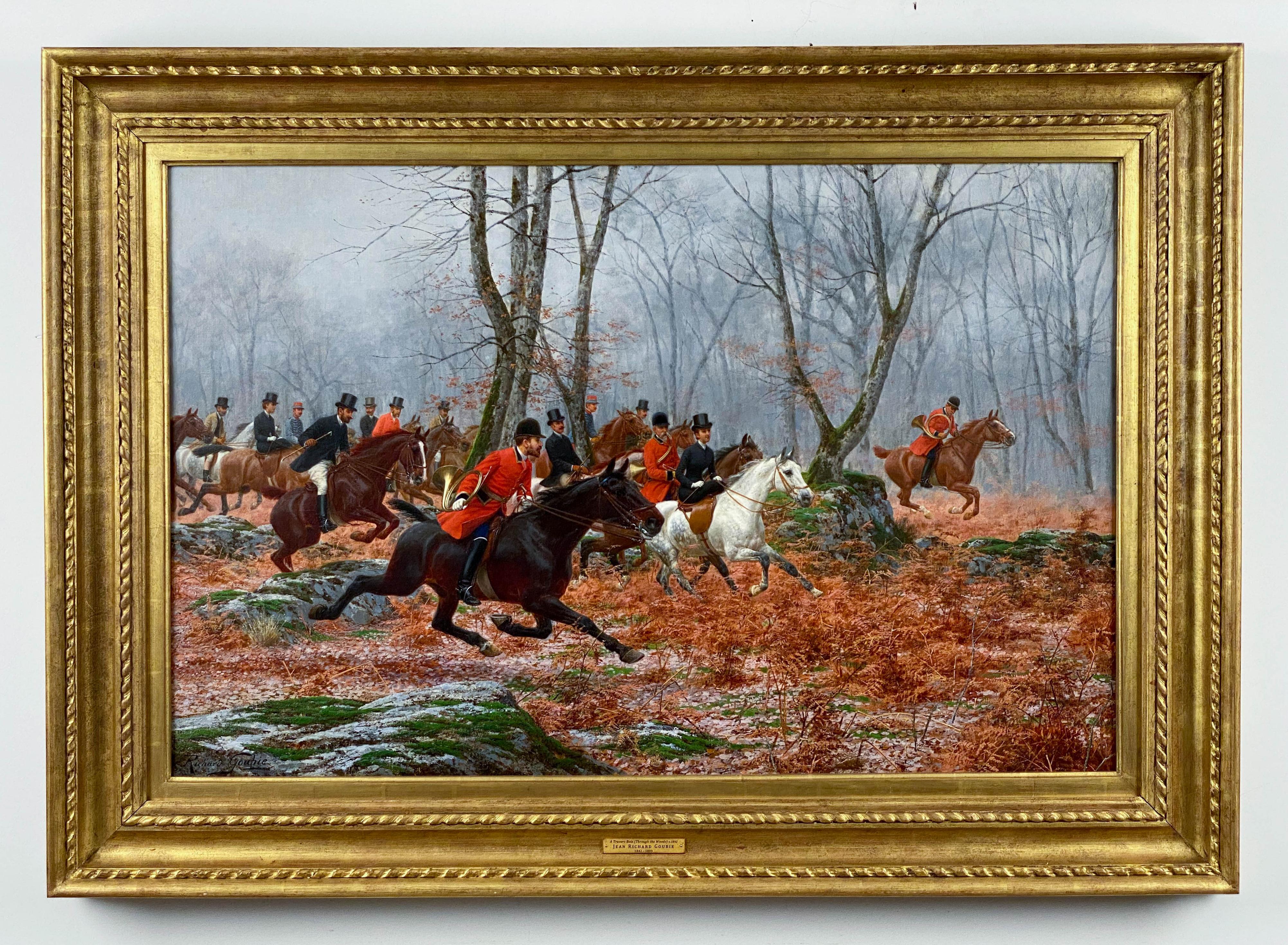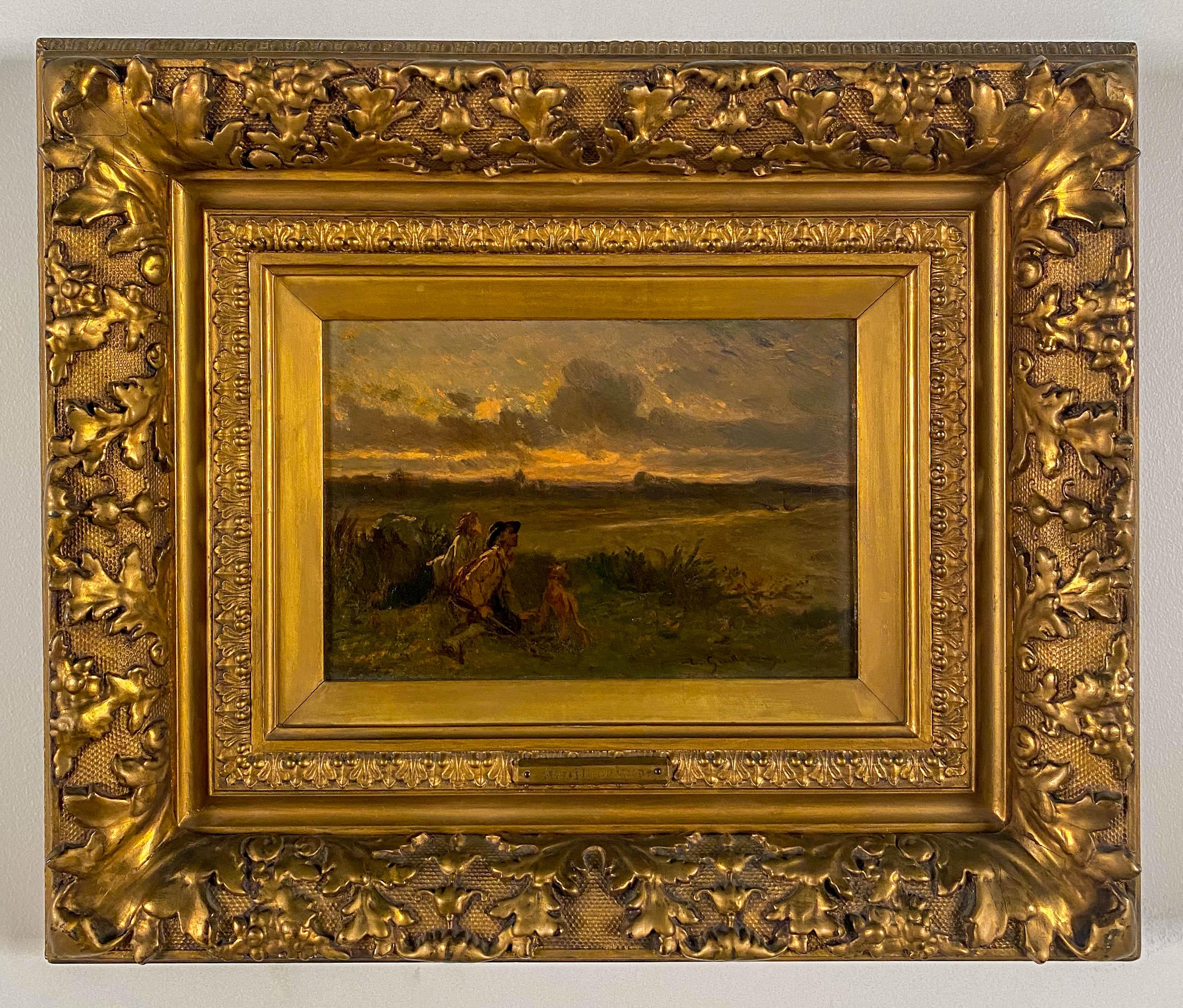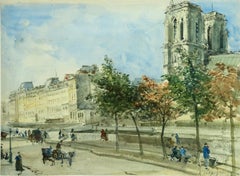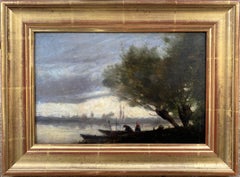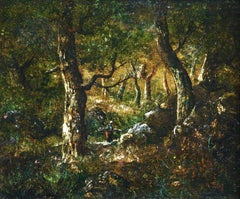
In the Forest - 19th Century Barbizon Oil Figure in Landscape by Diaz de la Pena
View Similar Items
Want more images or videos?
Request additional images or videos from the seller
1 of 9
Narcisse Virgilio Díaz de la PeñaIn the Forest - 19th Century Barbizon Oil Figure in Landscape by Diaz de la Penac.1860
c.1860
About the Item
- Creator:Narcisse Virgilio Díaz de la Peña (1807 - 1876, French)
- Creation Year:c.1860
- Dimensions:Height: 10 in (25.4 cm)Width: 12 in (30.48 cm)
- Medium:
- Movement & Style:
- Period:
- Condition:Excellent condition for age.
- Gallery Location:Marlow, GB
- Reference Number:Seller: LFA00641stDibs: LU41533504581
About the Seller
5.0
Platinum Seller
These expertly vetted sellers are 1stDibs' most experienced sellers and are rated highest by our customers.
Established in 2001
1stDibs seller since 2016
Typical response time: 3 hours
More From This SellerView All
- View of the Île de la Cité with Notre-Dame Cathedral, Paris by Henri HarpigniesBy Henri Joseph HarpigniesLocated in Marlow, BuckinghamshireA beautiful watercolour and chalk on paper circa 1860 by French Barbizon painter Henri Joseph Harpignies. The piece depicts figures beside the river Seine in Paris with a view of the Île de la Cité and the Notre Dame Cathedral behind on what looks to be a cool autumn day with the leaves of the trees beginning to turn brown. Signed lower right. Dimensions: Framed: 20"x23.5" Unframed: 10"x13.5" Provenance: M. Knoedler & Co. New York Christie's - New York Saint-Privé is a French commune located in the department of Yonne in region Bourgogne-Franche-Comt Born in Valenciennes, Henri Harpignies...Category
Late 19th Century Barbizon School Landscape Paintings
MaterialsPaper, Chalk, Watercolor
- First Communion - Barbizon Figurative Pastel Painting by Leon Augustin LhermitteBy Léon Augustin LhermitteLocated in Marlow, BuckinghamshireSigned Barbizon figures in landscape pastel on paper circa 1885 by French painter Leon Augustin Lhermitte. The piece depicts a first communion ceremony, with girls in white dresses and headscarves walking through a village as elder women look on. A wonderful piece in the artist's distinctive style. Signature: Signed lower left Dimensions: Framed: 27"x31" Unframed: 20"x24" Provenance: Arthur Tooth & Sons - London (label verso) Léon Augustin Lhermitte was the son of a school teacher. He painted from a very early age and settled in Paris in 1863, enrolling in the École Impériale de Dessin. His teacher was Lecocq de Boisboudran. In the early days of his career he earned a living doing illustrations for boxes of sweets and the catalogues of the cabinet-makers of the Faubourg St-Antoine, as well as publishing houses. In 1879 he went to Great Britain, to which he returned frequently. The same year he met the art dealer Paul Durant-Ruel who exhibited his works. He was one of the founders of the Société Nationale des Beaux-Arts, of which he became vice-president. Lhermitte initially produced charcoal drawings which revealed his deep feeling for nature. His first attempt, Banks of the Marne near Alfort, caused a sensation. Following this he executed canvases, showing himself to be a fine landscape artist and a skilful draughtsman. He painted scenes from rural life almost exclusively and benefited from exceptional interest generated by the prizes awarded to the works of J. F. Millet. But although he was very much affected by the work of the painter of Angelus, he himself sought only the pictorial element and not a synthetic translation. Many other French masters of the period share his completely objective vision, for example Bastien Lepage, Roll, J. C. Cazin and Rafaelli. Like them, he put into practice very early on the technique of 'clear painting' made fashionable by the pursuit of Impressionism. But this group of artists borrowed from this method only those elements which appealed to public taste, and ignored chromatic elements. Lhermitte also paid the price for the easy success of those early days. His peasants, which found general favour with the public at the time, nowadays seem rather feeble alongside Camille Pissarro's renderings of the same subject. However, in order to pass judgement on an artist such as Lhermitte, it is necessary to understand the era in which he worked, the era in which Realism was the only acceptable approach. It was in the atmosphere of the 'Théâtre Libre' of Antoine and the novels of Maupassant, Zola and their imitators that this type of art developed. In this context, Lhermitte is recognised as having painted the life of the peasants with great powers of objective observation and great insight into types and physiognomies. Nothing escaped his implacable eye and his bold and vigorous hand was guided by a lucid mind. The simplest elements of nature take on an air of true grandeur in his painting, despite their romantic and sentimental aspects. He is highly regarded both in France and in other countries by art lovers who look for nothing more than an attractive subject expertly painted. Among his most noteworthy works, outside those in museums, are: Les Halles, Washing the Sheep, Haymaking Time, and his large decorative panel...Category
Late 19th Century Barbizon School Figurative Paintings
MaterialsCanvas, Pastel
- Coucher de Soleil sur la Montagne - 19th Century Oil, Mountain Landscape - DuhemBy Henri DuhemLocated in Marlow, BuckinghamshireOil on panel by Henri Duhem depicting an elegant woman walking by trees in a landscape with the colours of the setting sun reflecting from the mountains beyond. Signed lower right an...Category
1920s Impressionist Landscape Paintings
MaterialsOil, Panel
- Paysan dans un verger - Impressionist Oil, Spring Landscape by Henri Le SidanerBy Henri Le SidanerLocated in Marlow, BuckinghamshireSigned and dated oil on panel figure in landscape by sought after impressionist painter Henri Le Sidaner. The work depicts a farmer walking beneath blossom trees in an orchard in spr...Category
1890s Impressionist Landscape Paintings
MaterialsOil, Panel
- Fete Champetre - Symbolist Figurative Oil Painting by Ker Xavier RousselBy Ker Xavier RousselLocated in Marlow, BuckinghamshireSigned symbolist oil on panel circa 1910 by French Les Nabis painter Ker-Xavier Roussel. This beautiful painting depicts nudes and figures dressed in robes in a wooded landscape. Signature: Signed lower left Dimensions: Framed: 31"x40" Unframed: 23"x32" Provenance: JPL Fine Arts - London c. 1985 Ker-Xavier Roussel met Édouard Vuillard at the Lycée Condorcet, which they both attended. Together they visited Eugène Ulysse Napoléon Maillard's studio, where Roussel became acquainted with Charles Cottet, going on to study at the Académie Julian under Bouguereau and Jules Lefebvre. There, he became interested in the Synthetism promoted by Sérusier, following Sérusier's heeding of the line Gauguin had adopted in Pont-Aven. He joined the Nabis group. He and his friends form a link between the Impressionists - he knew Cézanne, Degas, Renoir and Monet - and the Fauves and Cubists. In his earliest paintings, Roussel adopted a dark palette for Realist still-lifes. Later, his work bore the influence of Gauguin, Sérusier, the Nabis and Cézanne, in Intimist scenes painted in flat tints not yet clearly delineated. Their dull, saturated tones are reminiscent of Cézanne. In about 1900 he started painting mythological scenes full of nymphs and fauns and set in his home region of Île-de-France. After a bicycle trip in Provence with Maurice Denis, during which he met Cézanne, he lightened his palette, much taken by the cloudless skies below which he would now set the mythological and idyllic compositions which link him to Poussin and Corot. This wondrous, unreal world found its way into large-scale works, including the stage curtain of the Champs-Élysées theatre in 1913, a large Pax Nutrix for the Palais des Nations in Geneva and Dance for the Palais de Chaillot in 1937. He is best remembered for: Silenius' Triumph, Polyphemus, Diana, The Abduction of the Daughters of Leucippus. The nymphs and fauns of a mythology quite his own appear in clearings and woods from the outskirts of Paris, but the sun they rejoice in is Mediterranean. To capture the vibration of bright colours under a permanent sun, he later turned to pastels. He was more a Symbolist than a Nabi and signed himself K.-X. Roussel. He also produced lithographs. He took part in exhibitions from 1891 with the Groupe des Vingt at le Barc de Bouteville's gallery in Brussels. Then he exhibited in Revue Blanche Painters ( Les Peintres de la revue blanche) in Paris; with the Nabis at Café Volponi in Paris; before World War I with Free Aesthetics in Brussels; from 1901 at the Salon des Indépendants and the Salon d'Automne; in the 1930s in Revue Blanche Painters ( Les Peintres de la Revue blanche) hosted in Paris by designer Bolette Natanson, the daughter of the Revue Blanche's owner. He took part in The Masters of Contemporary Art ( Les Maîtres de l'art contemporain) at the Musée du Petit Palais in Paris, and at the 1938 Venice Biennale and 1939 New York World Fair. He featured posthumously in Toulouse-Lautrec and the Nabis ( Toulouse-Lautrec et les Nabis) at Bern Kunsthalle; From the Revue Blanche ( Autour de la revue blanche) in the Galerie Maeght, Paris, and in Tokyo and Brussels. He had one-man shows in Paris before his death in 1944. Retrospectives were mounted in the 1960s in London and Bremen. Museum and Gallery Holdings: Geneva (Petit Palais): Haystacks on the Seaside Paris (BNF): Training the Dog; Landscapes (engraving); Nymph and Faun (c. 1895, etching) Paris (Louvre): Poject for a Screen (drawing) Paris (MNAM-CCI): The Road (c. 1905); The Cyclops (1908); Venus and Cupid on the Seafront (1908); The Abduction of Leucippus' Daughters (1911); Pastorale (1920); Diana at Rest (1923); Portrait of Vuillard (1934) Paris (Mus. d'Orsay): The Gate (pastel); Woman in Profile with Green Hat; In Bed; Félix Valloton...Category
Early 20th Century Symbolist Figurative Paintings
MaterialsOil, Panel
- Lac De Geneve - French Impressionist Oil, Night Landscape by Henri DuhemBy Henri DuhemLocated in Marlow, BuckinghamshireSigned and dated impressionist landscape oil on panel by French painter Henri Duhem. This beautiful piece depicts a view of a cottage beside a path that runs along the bank of Lake Geneva in Switzerland. A full moon illuminates the sky overhead. Signature: Signed lower left and dated 1919 verso Dimensions: Unframed: 7.5"x9.5" This painting is not currently framed but a suitable frame can be sourced if required Provenance: The artist's estate Henri Duhem was descended from an old Flemish family and originally practiced as a lawyer. In 1887, his passion for drawing and watercolors finally led him to go to Paris and enroll in the drawing classes of Henri Harpignies. While there, he became friends with Émile...Category
1910s Impressionist Landscape Paintings
MaterialsOil, Panel
You May Also Like
- Light on the water, luminous river landscape with two lone figures paintingBy Charles LapostoletLocated in Norwich, GBThere is a lot to see in this delicate, luminous landscape: a little fisherman, a figure in his canoe, and the beautiful light on the water. It is an ...Category
Mid-19th Century Barbizon School Landscape Paintings
MaterialsOil, Wood Panel
- Fishing by Moonlight manner of Corot: Mooonlit lake French Barbizon oil paintingBy Jean-Baptiste-Camille CorotLocated in Norwich, GBNobody quite does moonlight quite like Camille Corot. Moonlit landscapes suited the artist's discreet artist's personality and painting. As Baudelaire astutely observed: "M. Corot is...Category
1860s Barbizon School Landscape Paintings
MaterialsWood Panel, Oil
- Walnut trees on the island and the Jonchère hillside in Bougival, FranceBy Auguste AnastasiLocated in PARIS, FRAuguste Paul Charles ANASTASI (Paris, 1820-Paris, 1889) Walnut trees on the island and the Jonchère hillside in Bougival Oil on canvas Stamp of the ANASTASI sale on the stretcher 4...Category
Mid-19th Century Barbizon School Figurative Paintings
MaterialsOil
- Oaks at Belle-Croix - Fontainebleau, FranceBy Auguste AnastasiLocated in PARIS, FRAuguste Paul Charles ANASTASI (Paris, 1820-Paris, 1889) Land and oaks at Belle-Croix - Fontainebleau Oil on canvas Stamp of the ANASTASI sale on the stretcher 33 x 41cm Provenance...Category
Late 19th Century Barbizon School Landscape Paintings
MaterialsOil
- Path in the rocks at Pont-Aven - Brittany, FranceBy Auguste AnastasiLocated in PARIS, FRAuguste Paul Charles ANASTASI (Paris, 1820-Paris, 1889) Path in the rocks at Pont-Aven - Brittany Oil on paper mounted on canvas Stamp of the ANASTASI sale on the stretcher 24 x 32...Category
Mid-19th Century Barbizon School Landscape Paintings
MaterialsOil
- Antique French Barbizon Signed Oil Painting Figure in Boat River LandscapeLocated in Cirencester, GloucestershireBarbizon School, late 19th/ early 20th century indistinctly signed lower corner inscribed verso oil painting on board, framed framed: 22 x 16.5 inches board: 16.5 x 11 inches provena...Category
19th Century Barbizon School Landscape Paintings
MaterialsOil
Recently Viewed
View AllMore Ways To Browse
Vintage French Color Palette
Soviet Union
Vintage Beach Scene Painting
Boats On A Beach
Woman Impressionist Landscape
Pair Of Oil Landscapes
19th C Landscape Painting
Western Mountain Paintings
Oil Painting With African American
English Living Paintings
Pair Oil Landscape Paintings
Northern England
Unsigned Landscape Oil Painting
Oil Landscapes Florence Italy
Impressionist Texas
G I G I Landscapes
Colorado Springs
Snow Skier
